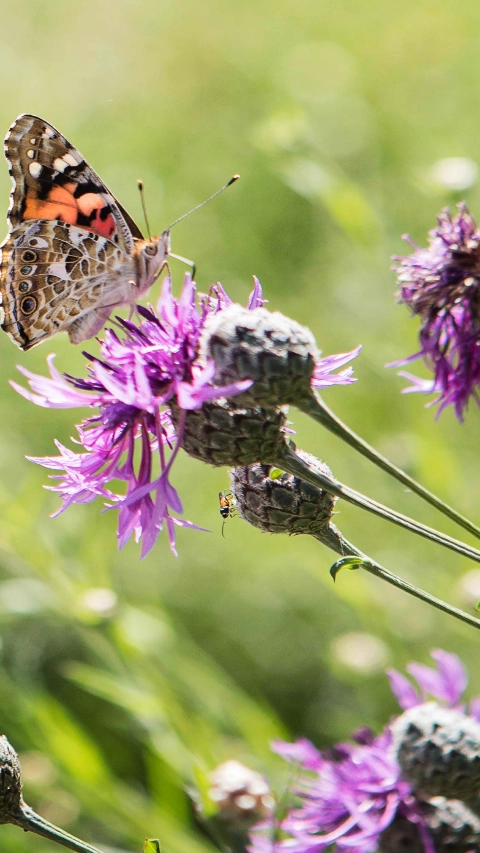Sustainability
Biodiversity and ecosystems
Biodiversity is under threat. It is the basis for the efficiency of our ecosystems. As a chemical company, we use many valuable resources provided by nature such as water, air and soil. At the same time, our business activities have an impact on them, for example through emissions into the environment or the purchase of renewable raw materials. Protecting biodiversity is therefore a key element of our commitment to sustainability.
The Global Biodiversity Framework (GBF) of the United Nations’ Convention on Biological Diversity and the Sustainable Development Goals (SDGs) serve as important orientation and reference frameworks for BASF. We want to reduce the pressure on nature and contribute to the preservation and restoration of biodiversity. To this end we have identified touchpoints of our business activities with nature. In order to better order and understand BASF's impact on nature along the value chain, we use the five drivers of biodiversity loss defined by the Intergovernmental Science Policy Platform on Biodiversity and Ecosystem Services (IPBES): land use change, pollution, climate change, overexploitation and invasive species.
We have the greatest points of contact with nature in the fields of "pollution", followed by "resource use" (water), "climate change" (greenhouse gas emissions) and "land use change" (mainly related to the supply of raw materials).
.jpg)
Assessment
Quantifying biodiversity is complex and requires site-specific approaches.
To measure potential causes of biodiversity loss, we use indicators such as nitrogen emissions in water and indicators such as species occurrence to assess the status of ecosystems. We also capture our land needs. In addition, we regularly test (new) analysis tools, such as the WWF Biodiversity Risk Filter, which help us to understand impacts and dependencies on biodiversity.
The indicators are integrated into our different methodologies for measuring our sustainability performance, e.g. Eco-Efficiency Analysis, Sustainable Solution Steering (TripleS) and AgBalance®.
Furthermore, we regularly check which of our global production sites are located near biodiversity sensitive areas.
Measures
We are guided by the risk mitigation hierarchy as we attempt to avoid any impacts on nature. If this is not feasible, we aim to reduce our impacts, support the restoration of nature or contribute to the transformation of value chains toward better environmental sustainability.
In addition, we are continuously optimizing production processes with a variety of measures at our sites. In this way, we avoid and reduce negative impacts on nature by contributing to energy efficiency, resource conservation and climate protection, as well as reducing emissions to air, water, and soil. Plus, we apply water stewardship and integrate Responsible Care®.
At the same time, we strive to restore or regenerate nature, e.g. in local projects such as Mata Viva in Brazil.
We are also contributing to system-wide change, e.g. by shifting our business models to renewable energy, renewable raw materials and more circular economy.

Local action
Our local actions are of particular importance. Our locally targeted measures are tailored to the specific ecosystems and species of a region. This ensures more targeted and effective protection.
Our local biodiversity projects serve to protect and develop biodiversity, often go beyond legal requirements and are generally designed for the long term. Furthermore, local initiatives often involve the members of the respective communities, which fosters a sense of responsibility and ensures a long-term commitment to the preservation of natural heritage.
Examples for our biodiversity projects

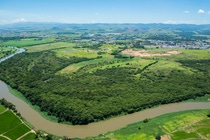
The Mata Viva® initiative was founded in 1984 to protect water quality, preserve the soil, and create areas that preserve native vegetation and wildlife. Their first major success was the restoration of 128 hectares of forest along the Paraiba do Sul River. The initiative, a collaboration between BASF and Fundacao Espaco Eco, has spread throughout Brazil, attracting a wide range of partners from agriculture, business and academia with a shared desire to promote biodiversity. Since the region around BASF's site in Guaratinguetá on the Paraíba do Sul River is part of the Atlantic Forest, we were inspired to protect the local environment by promoting sustainable practices in Brazilian agriculture. Our goal: to reclaim degraded land in order to restore biodiversity.
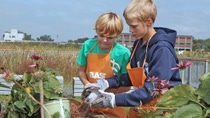
BASF has been committed to conservation projects in North America for years: It began in 2002 when BASF created a scenic habitat near its plant in Fighting Island, Canada. In 2004, it installed nesting boxes for various species of birds at its location in Whitehouse, Ohio. BASF developed a wildlife habitat in Rensselear, New York, in 2008. For all three projects, it received conservation certification from the Wildlife Habitat Council.
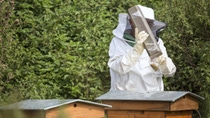
BASF is considered an exemplary company for local authorities: Since 2014, a dedicated team has been working on increasing the biodiversity on the BASF site for "BASF France Division Coatings" in Breuil-le-sec, France. Fallow land and an orchard were created, beehives were set up and nesting boxes for swallows were built. Animal and plant species are regularly counted and monitored.
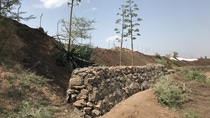
Around our BASF site in Ethiopia, we organize annual campaigns to promote reforestation and erosion control in the area. Concrete measures include the planting of indigenous trees, a fruit tree project for the local community, and the construction of net cages for the local tree nursery. BASF also regularly donates gabions to the local communities surrounding the farm to control and prevent erosion. BASF also implemented different biodiversity measures on its site such as the creation of a forest with indigenous trees and also established a wetland as part of its on-site water treatment plant. These measures benefit wildlife such as amphibians, insects and multiple bird and mammal species.

Since 2014, BASF has been using organically grown rambutan fruits and by-products as raw materials for active ingredients in Vietnam. Our partners rely on cultivation methods that have been tested for sustainability by a non-governmental organization. Ecocert has even independently certified the rambutan plantation. Organic farming contributes to the preservation of the ecosystem and local biodiversity, and promotes the preservation of the argan tree, which would otherwise have had to be cut down for the cultivation of crops.
Partnerships
We actively engage in dialogue and partnership with stakeholders and create transparency by disclosing and reporting our impacts and dependencies.
We actively seek collaboration with relevant stakeholders and organizations worldwide, for example in the Taskforce on Nature-Related Financial Disclosures (TNFD), to expand our knowledge, raise awareness of biodiversity and drive necessary action.
